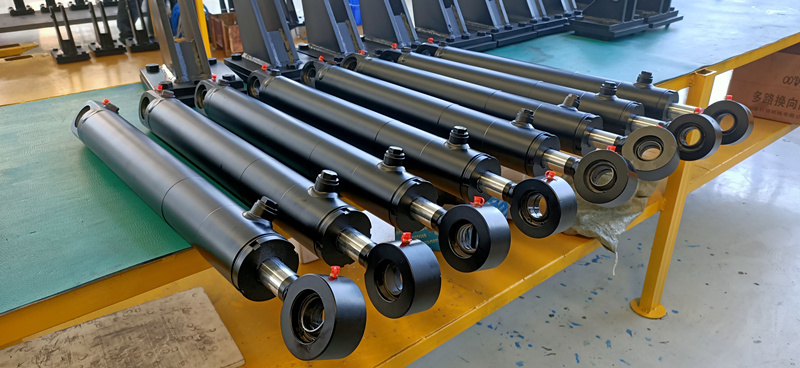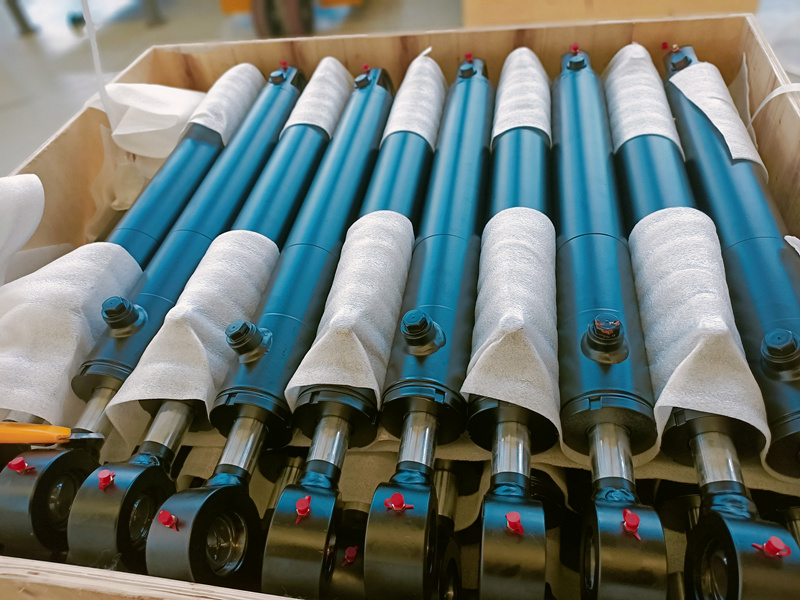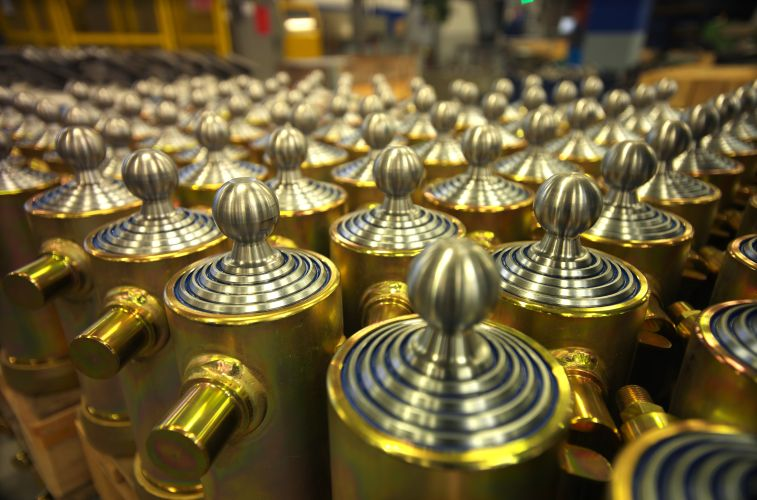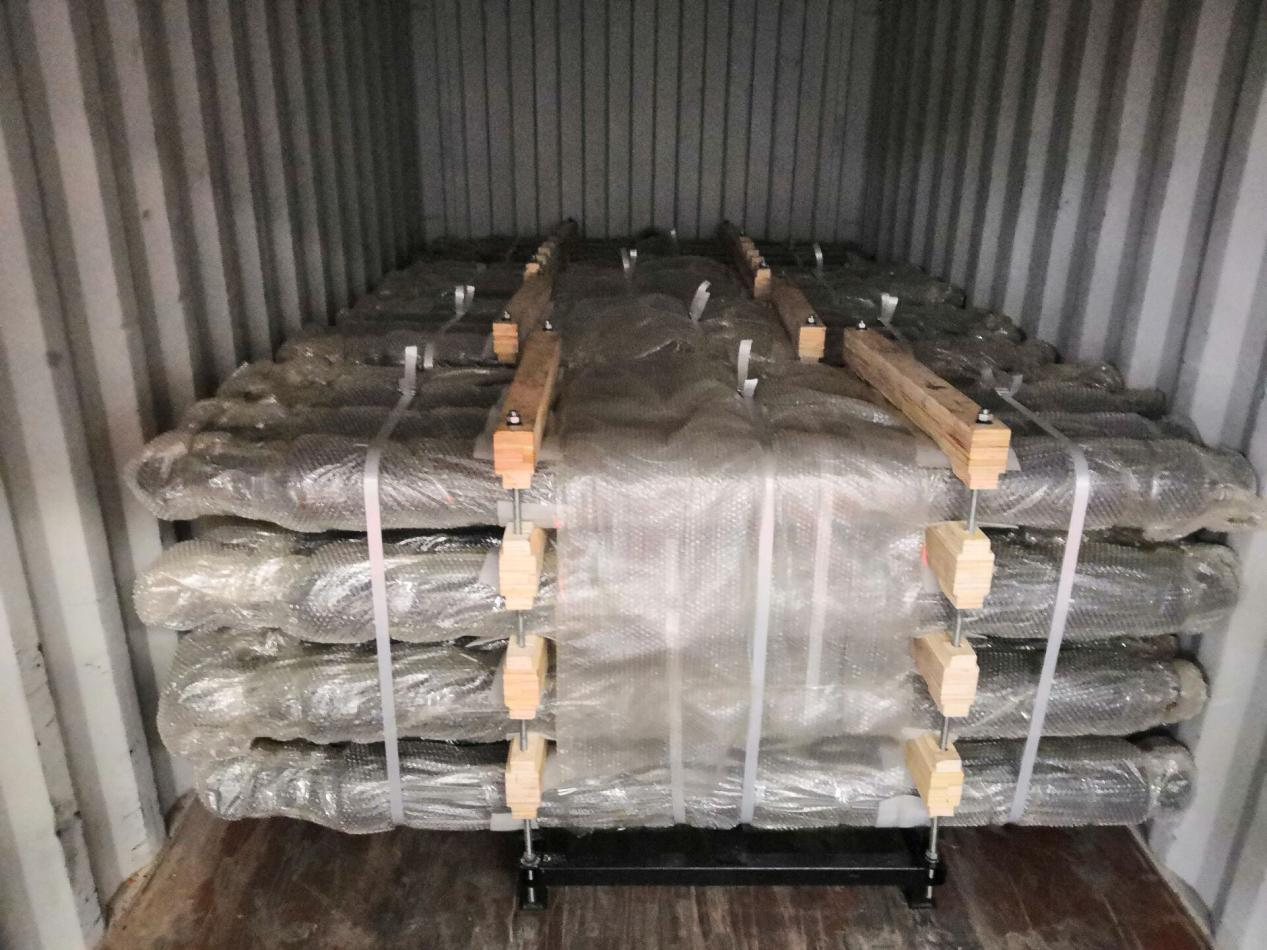When it comes to sourcing custom hydraulic cylinders, chances are the primary consideration is lead time. Yes, manufacturing quality and a robustly engineered design are critical, but after that, business imperatives drive the need for short lead times. Typically, for custom hydraulic cylinders, the turnaround time for the industry is 9-12 weeks. Often this isn't fast enough.
Some suppliers can offer standard turnaround at 6-8 weeks, including engineering time. How can they do it? Asking the right questions can help you discover if a supplier will be able to deliver with short lead times, on the dates promised, time after time. Here are seven questions to ask your supplier.

1. What is the stocking level of cylinder components? There are 18 components in a typical hydraulic cylinder. All of them need to be in stock or the cylinder can't reach final assembly. A good supplier will keep 4-8 weeks of stock on hand: tubes, clevises, trunnions, pistons, heads, mani folds, seals, etc. About 40-60% of the cost of a cylinder is its materials, so it takes a real commitment on the part of the supplier to adequately stock common components.
2. What does the supply chain look like? Suppliers who manufacture their components (by machining or welding) will always be able to make the needed parts from raw stock, and so will never be affected by supply chain interruptions caused by pandemics or trade wars. If parts are machined by a third party, what is the lead time to your supplier?
3. How well do they manage machine changeovers? It takes time to change a machine's tooling to set it up to make a different part. Managing this process successfully makes a supplier able to respond nimbly to orders.
Quick changeovers are a well-established discipline of manufacturing, but not everybody does changeovers well. A smart supplier will schedule similar parts next to each other, such as 2-inch cylinders running after 2.25-inch cylinders, to minimize tool changes.

4. How many design engineers do they have on staff? Each custom cylinder must be designed to meet the requirements of its application. This goes beyond load and stroke to include its service life, where it is installed, and special features of the application. You don't want the same design as the previous customer just because the engineer was in a hurry. The engineer should have the time to deeply understand your application and recommend design solutions to problems encountered in the field. Just as important, the number of engineers directly impacts how quickly they can execute a design and send you CAD files for approval. Ask your supplier how many custom design orders do they handle in a year, and divide by the number of engineers. A good supplier will staff at least one engineer for every 100 custom orders.

5. How do they schedule their manufacturing? Sometimes you need to request an expedited order. If the suppler has scheduled a three-day run of one type of cylinder, then there is no opportunity to break into the schedule and run your expedited order. This situation is common with hydraulic cylinder suppliers who have large-order customers. Usually these customers are big OEMs that give a lot of business to the supplier. Smaller order customers will always have to wait. Instead, seek out a supplier who schedules a mix of cylinder sizes and types in the same week. Scheduling work by week ensures that small order customers get equal treatment, and every changeover is an opportunity to break in with an expedited order. This approach trades off throughput for flexibility, so many suppliers have decided it is too costly to schedule work this way.
6. Will they stock inventory for you? Sometimes you need cylinders in an awful hurry. If your supplier offers a stocking program, then you will have the cylinders you need ready to ship. Rather than a 6-to-8-week lead time, the lead time is reduced to shipping time, whether it's by UPS red or by LPL carrier. There is a lot more to this topic, which is explored in a later section.

7. Do they offer expedited delivery? An expedited program is typically a four-week lead time. You are locked into buying a certain number of cylinders, and locked into the ship date, but the four-week schedule is undeniably attractive.
Use these seven questions the next time you evaluate a supplier of custom hydraulic cylinders. They will lead to frank conversations and uncover if a potential supplier, although well meaning, is not prepared to meet short lead times consistently. Having a reliably fast supplier is the best way to ensure that you will be able to respond to the changing customer demand, keeping customers from buying from competitors, and capturing maximum revenue.
Supplier Stocking Programs
Supplier stocking is an often-overlooked strategy for getting fast delivery of custom hydraulic cylinders. The supplier keeps a predetermined number of your finished cylinders on hand, with the expectation of shipping them at a planned future date.
If you need them earlier, then they are available for immediate shipment. A stocking supplier offers their OEM customers peace of mind. OEMs know cylinders will be available when they need them. For example, an OEM that makes snow plows may experience an extra-snowy winter and need fast delivery of hydraulic cylinders to meet a sudden spike in customer demand. Making their customers wait a month may end up hurting sales. A stocking program means customers don't have to wait and sales don't have to be lost.
There are other advantages. Having your supplier carry inventory means that you don't have to. Supplier stocking programs enable you to operate leanly: reduce inventory, preserve cash flow, and achieve JIT objectives. What's more, participating in stocking programs often gets you the best pricing on cylinders.
How Supplier Stocking Programs Work
There are three ways to participate in a supplier stocking program: blanket orders,building to forecast, and minimum stocking levels.
Blanket orders are an agreement for you to take a certain number of cylinders at certain times. An example is an order for 400 cylinders to be delivered in three releases: 200 in six weeks, 100 more in three months, 100 more in six months.
Usually these agreements are described in a static document, often on paper. Building to forecast is an agreement to order based on a weekly or monthly forecast. The forecast is published electronically and updated as needed. An example is to build 25 to 100 cylinders in four releases spread over six months. Each release has specific calendar delivery dates tied to the forecast, and the dates and quantities may change. The forecast takes the place of the order. This simplifies the job of purchasing agents at the OEM. Another way to structure the agreement is to specify minimum stocking levels, and each release is triggered by your request… a true pull-through system. To protect both parties, all of these types of stocking agreements specify minimum
and maximum stocking levels.
The order can't be crazy small, not 50 cylinders per year. If your order is that small,
you probably don't need stocking anyway.
Some suppliers of custom hydraulic cylinders don't like to stock. It challenges their cash flow to carry cylinders in inventory before they get paid for making them. On the other hand, some suppliers value the flexibility of stocking programs. They can schedule builds at convenient times, which reduces manufacturing costs, sure in the knowledge that the customer will accept the cylinders at a future date. The orders tend to be larger, spread out over time, which offers profitability and stability.
Keeping the order quantity consistent helps the supplier predict part inventory and manufacturing times. For example, always order 25 cylinders at a time. If you need 50 cylinders, the supplier can add a second lot to the schedule while the first lot is running.
|
|
Forecast |
Blanket Order |
|
Faster lead time |
√ |
√ |
|
Minimum order 100 cylinders |
√ |
√ |
|
Ability to receive best pricing available |
√ |
√ |
|
Shift inventory costs from you to supplier |
√ |
√ |
|
Stocking of a minimum of one release |
√ |
√ |
|
Pricing stability |
√ |
√ |
|
Raw material on hand when needs surpass agreed-upon stocking levels for a quicker turnaround |
√ |
√ |
|
Flexibility to move shipments in or out of the schedule |
√ |
√ |
|
Supplier maintains your cylinder schedule |
√ |
|
|
Stocking agreement required for both min and max levels. Protection for you and supplier |
√ |
|
|
Ship directly from electronic forecast |
√ |
|
|
Issue purchase orders against the forecast |
√ |
|